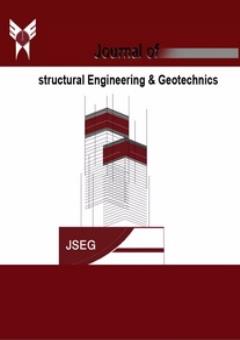-
-
List of Articles
-
Open Access Article
1 - Cyclic Behavior of Precast Post-Tensioned Concrete Shear Wall with and Without Opening
Ahmad Shokoohfar peyman khorshidi -
Open Access Article
2 - Effects of Structure Height on Seismic Demands of Under-designed RC Frames Considering Soil-Structure Interaction
Behtash JavidSharifi Gholam Reza Atefatdoost -
Open Access Article
3 - Seismic Fragility Analysis of RC Continuous Girder Bridges Using Artificial Neural Network
Alireza Yazdankhah Araliya Mosleh Fatemeh Pouran Manjily Mehran Seyedrazzaghi -
Open Access Article
4 - An Economical and Behavioral Comparison of Steel Special, Intermediate, and Ordinary Moment Resisting Frames
Sedigheh Gheisari -
Open Access Article
5 - Effect of Basalt and Polypropylene Fibers on Unconfined Compressive Strength of Cement-Stabilized clay, an Experimental Approach
Seyed Hadi Sahlabadi Meysam Bayat Mohsen Mousivand Mohsen Saadat -
Open Access Article
6 - Numerical Investigation of the Limit Equilibrium Method in Tunnel Stability Using Finite Element (FEM)
Semko Arefpanah Alireza Sharafi
-
The rights to this website are owned by the Raimag Press Management System.
Copyright © 2021-2025







